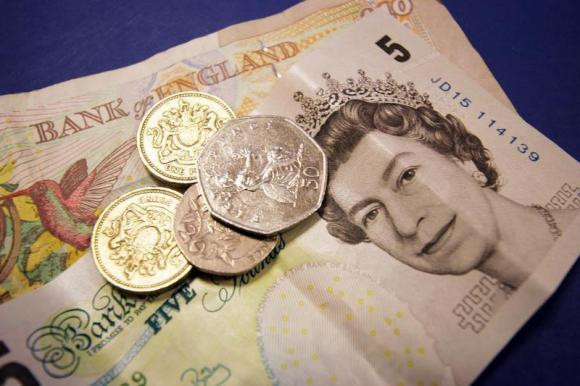Sterling plunges to 5-year low as disappointing industrial output data weakens Q1 GDP outlook

The UK currency has plummeted to a five-year low on Friday as the industrial production data for February came as a negative surprise, underpinning concerns that the Q1 GDP data later this month will come in with bigger dovish surprise.
The GDP data on 28 April will be just a week ahead of the general elections, and therefore the output data has increased political uncertainty, as a dismal show in the growth numbers could end up with much bigger political impact.
GBP/USD fell more than 100 pips on the day to as low as 1.4601 as at 12.30 BST, its lowest since June 2010. So far this week, the pound is down more than 2% with the decline since Wednesday's close alone coming to 1.7%.
UK's manufacturing output growth fell to 1.1% on a year-on-year basis in February from 1.7% in January while analysts had been expecting 1.1% growth. The industrial output growth sowed to 0.1% from 1.2% compared to the consensus of 0.4% growth.
The month-on-month industrial output rebounded to 0.1% growth from 0.1% decline at the start of the year but trailing analysts forecast of 0.3% growth. The manufacturing output rebounded in line with expectations to growth of 0.4% but the January number was revised to -0.6% from -0.5%.
Analysts said UK's underlying industrial growth remains weak and so manufacturers will continue to face serious challenges. The market is now waiting for the NIESR GDP estimate for the three months to March, due on the hour.
They add that markets are not in favour of uncertainties whatsoever, so with both the Conservative and Labour sides neck and neck in the run up to the 7 May UK general election, FTSE and pound may see further downsides.
Thursday's weekly jobless numbers eased the fear that the disappointing March non-farm payroll data may have set a trend. Initial jobless claims for the week to 3 April increased to 281,000 from the previous week's 268,000 but it was less than analysts' forecast of 285,000, as per the data released overnight.
Meanwhile, the continuing claims for the 27 March week declined to 2.304mn from 2.325mn against the consensus estimate of a rise to 2.356mn.
The dollar bulls have returned with force, sending the USD index to a new multi-week high of 99.37. It is now back in the vicinity of 100, which it crossed and hit a 12-year high of 100.40 last month.
The dollar rally as well as weak Eurozone data have weakened the euro generally, and the slide in the pound did not prevent the EUR/GBP cross from falling 1.8% so far on the week. It traded as low as 0.7224 on Friday, its lowest since 31 March.
© Copyright IBTimes 2025. All rights reserved.






















